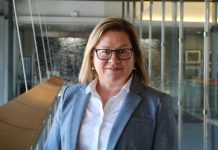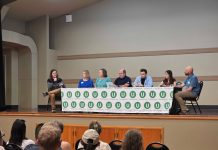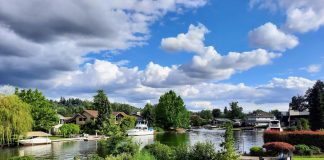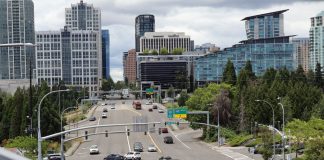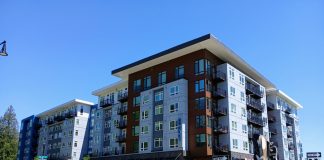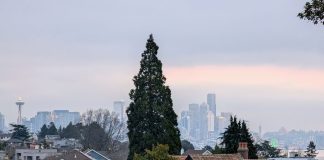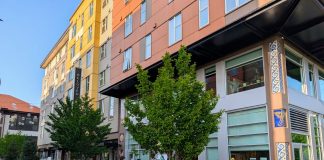More recent posts »
A few months before construction on RapidRide I Line between Renton and Auburn was set to begin, King County has still not been able to acquire portions of 25 properties needed for the bus project. Now it's considering a measure of last resort: condemnation.
Recent Posts
Seattle Inspector General Violating Disclosure Laws by Altering, Withholding Records
Advocates warn Seattle Inspector General Lisa Judge is jeopardizing public trust in the city’s police accountability system, as her office obscures records. The office also withheld what appears to be important evidence in a high-profile case involving former SPD chief Adrian Diaz.
Urbanism on the Eastside Panel Hints at Suburban Sea Change
At The Urbanist's “Urbanism on the Eastside” panel earlier this month, panelists discussed a sea change happening in the suburbs that are beginning to urbanize and break free of car dependence. Check out this recap of the discussion.
Sammamish Council Pursues Denser Town Center Vision Amid Backlash
Sammamish will study increasing the upper limit on housing in its Town Center to 4,000 units, after nearly two decades of anemic growth under a previous growth framework. The 6-1 vote came after a significant amount of community opposition and misinformation.
2025 Primary Election Endorsements
The Urbanist Elections Committee is excited to announce our 2025 primary election endorsements, which span the region from Tacoma to Everett. Be sure to vote by August 5.
Op-Ed: The War Over Tacoma’s Planting Strips
How the City of Tacoma uses planting strips along its streets tells a tale of haves and have-nots, and of our differing standards. The City has gone out of its way to exclude homeless people from this space with $163,000 worth of boulders.
Harrell Administration Cancels Planned Lake Washington Boulevard Safety Upgrades
The City of Seattle quietly dropped speed cushions and other traffic safety treatments from long-made plans after months of radio silence. The backpedal received swift pushback from some District 2 city council candidates.
Quiz Your Knowledge with The Urbanist Crossword Puzzle for July 13
Take the seventh installment of The Urbanist's crossword series, which runs every two weeks. If you love to take a contemplative moment with a brain-teasing puzzle, but you’re tired of nationally syndicated crosswords with no local flair or stance on high-capacity transit, you’re right where you need to be.
Urbanism on the Eastside Panel Hints at Suburban Sea Change
At The Urbanist's “Urbanism on the Eastside” panel earlier this month, panelists discussed a sea change happening in the suburbs that are beginning to urbanize and break free of car dependence. Check out this recap of the discussion.
Get Early-Bird Tickets for The Urbanist’s August 17th Endorsed Candidate Party
Get your ticket to meet our endorsed candidates, mingle with urbanists from across the region, and prepare for the general election in November.
Get Your Tickets for ‘Urbanism on the Eastside’ Panel July 6th
RSVP to The Urbanism on the Eastside Panel and join representatives from across the Eastside as they answer questions about housing, land use, and transportation.
More events posts »
Support Our Work
The Urbanist is a 501(c)(4) nonprofit. We depend on donations from readers like you to sustain our work. Subscribe as a monthly donor or make a one-time donation to help us grow.
Urbanism on the Eastside Panel Hints at Suburban Sea Change
At The Urbanist's “Urbanism on the Eastside” panel earlier this month, panelists discussed a sea change happening in the suburbs that are beginning to urbanize and break free of car dependence. Check out this recap of the discussion.
Sammamish Council Pursues Denser Town Center Vision Amid Backlash
Sammamish will study increasing the upper limit on housing in its Town Center to 4,000 units, after nearly two decades of anemic growth under a previous growth framework. The 6-1 vote came after a significant amount of community opposition and misinformation.
Bothell Drops Parking Mandates, Legalizes Neighborhood Corner Stores Citywide
Bothell becomes the first city in either King or Snohomish County to fully eliminate off-street parking mandates in order to reduce costs for homebuilding. The move clearly solidifies the city as a leader on housing and land use reform.
More Eastside Coverage posts »
Op-Ed: Seattle Council Should Scale Up Neighborhood Centers in Growth Plan
On Monday, June 23, the Seattle City Council is holding a public hearing on the One Seattle growth plan. Housing advocates must defend the 29 neighborhood centers in the plan and push to add more. Jazmine Smith lays out the case for these eight additions.
Harrell Official Minimizes Cuts to Housing Growth Centers as ‘Very Small’
After dozens of blocks were dropped from the One Seattle housing growth plan, planner Michael Hubner downplayed the changes as minimal. The Seattle Planning Commission painted the move as pushing the city is headed in the wrong direction.
Judge Dismisses Last-Ditch Challenges of Draft Seattle Growth Plan
Quick decisions by a King County Superior Court ruled that two separate challenges to the One Seattle Plan's environmental review will have to wait until the Seattle City Council makes a final decision on the growth plan.
More One Seattle Plan posts »
An Audio Recap of The Urbanist’s ‘Future of Seattle Housing’ Panel
Want a deep dive on the latest in Seattle housing policy? The Urbanist has you covered. Check out this recording and transcript of our April housing panel with experts.
Urbanist Reporters Appear on Hacks and Wonks Podcast
The Urbanist's contributing editor Ryan Packer and reporter Amy Sundberg appeared on back-to-back episodes of the Hacks and Wonks podcast this week. Be sure...
Ryan Packer Talks Vision Zero, Traffic Safety on Hacks and Wonks...
Ryan Packer broke down local "Vision Zero" traffic safety campaigns on a recent episode of the Hacks and Wonks podcast.
More podcast episodes »


